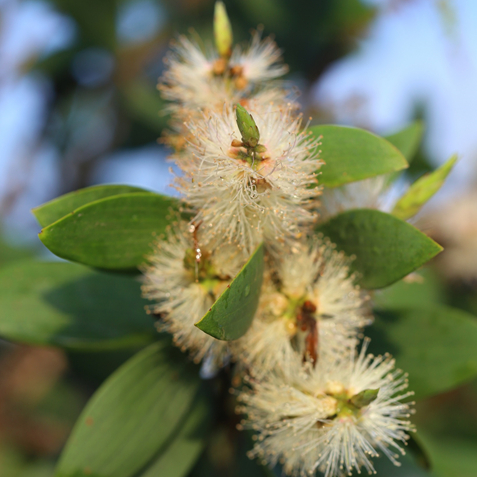
Background
People use cajeput oil for colds and congestion, headaches, toothache, skin infections, pain, and other conditions, but there is no good scientific evidence to support these uses.
Don't confuse cajeput oil with tea tree oil (Melaleuca alternifolia) or niauli oil (Melaleuca viridiflora).
Safety Safety definitions
When applied to the skin: Cajeput oil is POSSIBLY SAFE for most people when applied to unbroken skin. Applying cajeput oil to the skin may cause allergic reactions in some people.
When inhaled: It is POSSIBLY UNSAFE to inhale cajeput oil. It can cause breathing problems.
Special Precautions & Warnings:
Pregnancy and breast-feeding: There isn't enough reliable information to know if cajeput oil is safe to use when pregnant or breast-feeding. Stay on the safe side and avoid use.Children: Do not let children inhale cajeput oil. Cajeput oil is LIKELY UNSAFE when inhaled. It can cause serious breathing problems. Applying cajeput oil to a child's face is also LIKELY UNSAFE. Cajeput oil that is applied to the face can be inhaled and cause breathing problems.
Asthma: Inhaling cajeput oil might cause an asthma attack.
Diabetes: Cajeput oil might decrease blood sugar levels. Monitor your blood sugar carefully if you have diabetes and use cajeput oil as a medicine. The dose of your diabetes medication may need to be changed.
Surgery: Cajeput oil might affect blood sugar levels. This has raised some concern that it might interfere with blood sugar control during and after surgery. Stop using cajeput oil as a medicine at least 2 weeks before a scheduled surgery.
Effectiveness
- Cancer.
- Common cold.
- Fungal skin infections.
- Headache.
- Joint pain.
- Toothache.
- Other conditions.
Dosing & administration
Interactions with pharmaceuticals
Medications changed by the liver (Cytochrome P450 2D6 (CYP2D6) substrates)
Interaction Rating=Moderate Be cautious with this combination.
Some medications are changed and broken down by the liver. Cajeput oil might slow down how quickly the liver breaks down some medications. Taking cajeput oil along with some medications that are broken down by the liver might increase the effects and side effects of some medications. Before taking cajeput oil, talk to your healthcare provider if you are taking any medications that are changed by the liver.
Medications that might be affected include amitriptyline (Elavil), clozapine (Clozaril), codeine, desipramine (Norpramin), donepezil (Aricept), fentanyl (Duragesic), flecainide (Tambocor), fluoxetine (Prozac), meperidine (Demerol), methadone (Dolophine), metoprolol (Lopressor, Toprol XL), olanzapine (Zyprexa), ondansetron (Zofran), tramadol (Ultram), trazodone (Desyrel), and others.
Medications for diabetes (Antidiabetes drugs)
Interaction Rating=Moderate Be cautious with this combination.
Cajeput oil might lower blood sugar. Diabetes medications are used to lower blood sugar. By lowering blood sugar, cajeput oil might increase the risk of your blood sugar going too low. Monitor your blood sugar closely. The dose of your diabetes medication might need to be changed.
Some medications used for diabetes include glimepiride (Amaryl), glyburide (DiaBeta, Glynase PresTab, Micronase), insulin, pioglitazone (Actos), rosiglitazone (Avandia), chlorpropamide (Diabinese), glipizide (Glucotrol), tolbutamide (Orinase), and others.




